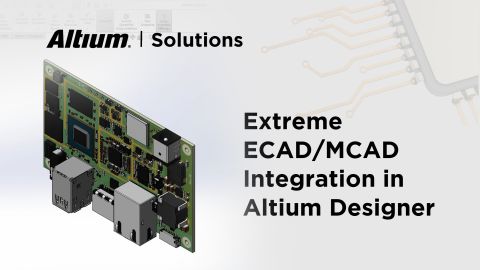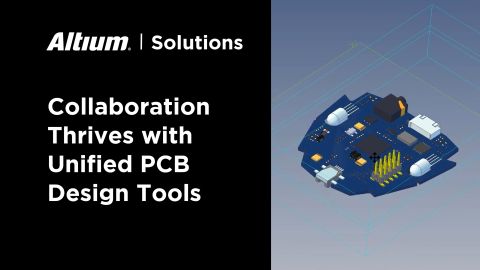Bridging the Gap between ECAD and MCAD: The Fusion 360 and Altium Designer Synergy
The collaboration between electronic design (ECAD) and mechanical design (MCAD) teams is essential for successful product development. However, integrating these two domains has long been a hurdle for engineers. This blog post will explore the synergy of Altium Designer, Fusion 360 and Altium MCAD CoDesigner, showcasing how this powerful combination bridges the gap between ECAD and MCAD, fostering seamless collaboration and boosting design efficiency.
The Fusion 360 and Altium Designer Alliance
Fusion 360 is an MCAD platform from Autodesk, and Altium Designer is a leading ECAD software. The two platforms are tightly integrated by MCAD CoDesigner, allowing for seamless collaboration between mechanical and electrical designers.

MCAD CoDesigner is a real-time bidirectional data exchange tool that allows designers to push changes from one platform to the other. This means that if a mechanical designer makes a change to a PCB layout in Fusion 360, the change will be automatically reflected in Altium Designer.
Unlocking Advanced Geometry and Enclosure Design
Fusion 360's advanced geometry capabilities unlock new possibilities for PCB design. For example, designers can use Fusion 360 to visualize and extrude 3D representations of copper traces. This can be helpful for ensuring that the PCB fits properly within a mechanical enclosure.

Efficiently Managing Simultaneous Design Changes
In a dynamic design environment, mechanical and electrical designers often work concurrently on a project. Fusion 360 and Altium Designer's integrated workflow efficiently manages simultaneous design changes. MCAD CoDesigner seamlessly transfers alterations made in one domain to the other, providing visual cues and easy acceptance or rejection options, streamlining the collaboration process.

Real-World Applications and Industry Impact
Real-world applications demonstrate the versatility and impact of Fusion 360 and Altium Designer integration. For example, Fusion 360 and Altium Designer were used to design the PCB for a new medical device. The integration of these two platforms allowed the design team to collaborate effectively and deliver the product on time and within budget.

Conclusion
The seamless synergy between Fusion 360 and Altium Designer redefines ECAD-MCAD collaboration, breaking barriers and empowering design teams to innovate faster and bring products to market sooner. MCAD CoDesigner acts as the driving force, facilitating real-time data exchange and ensuring design continuity, which can lead to faster time to market. With this powerful combination, engineers can focus on innovation and creativity, delivering cutting-edge products that exceed customer expectations and meet market demand sooner.
Here are some additional benefits of using Altium MCAD CoDesigner:
- Reduced risk of errors: rs is greatly reduced by ensuring that design changes are synchronized between the two platforms.
- Improved communication: MCAD CoDesigner facilitates seamless collaboration between mechanical and electrical design teams, which leads to a better understanding of the overall design and helps to identify and resolve design issues earlier.
- Shorter design cycles: The streamlined workflows and efficient communication lead to shorter design cycles, which can help to get products to market faster.
If you are looking for a way to improve your ECAD-MCAD collaboration, then I encourage you to check out Altium MCAD CoDesigner. This powerful tool can help you to streamline your workflows, enhance productivity, and create innovative and high-quality products.
Visit the Altium 365 website to learn more about the product.










